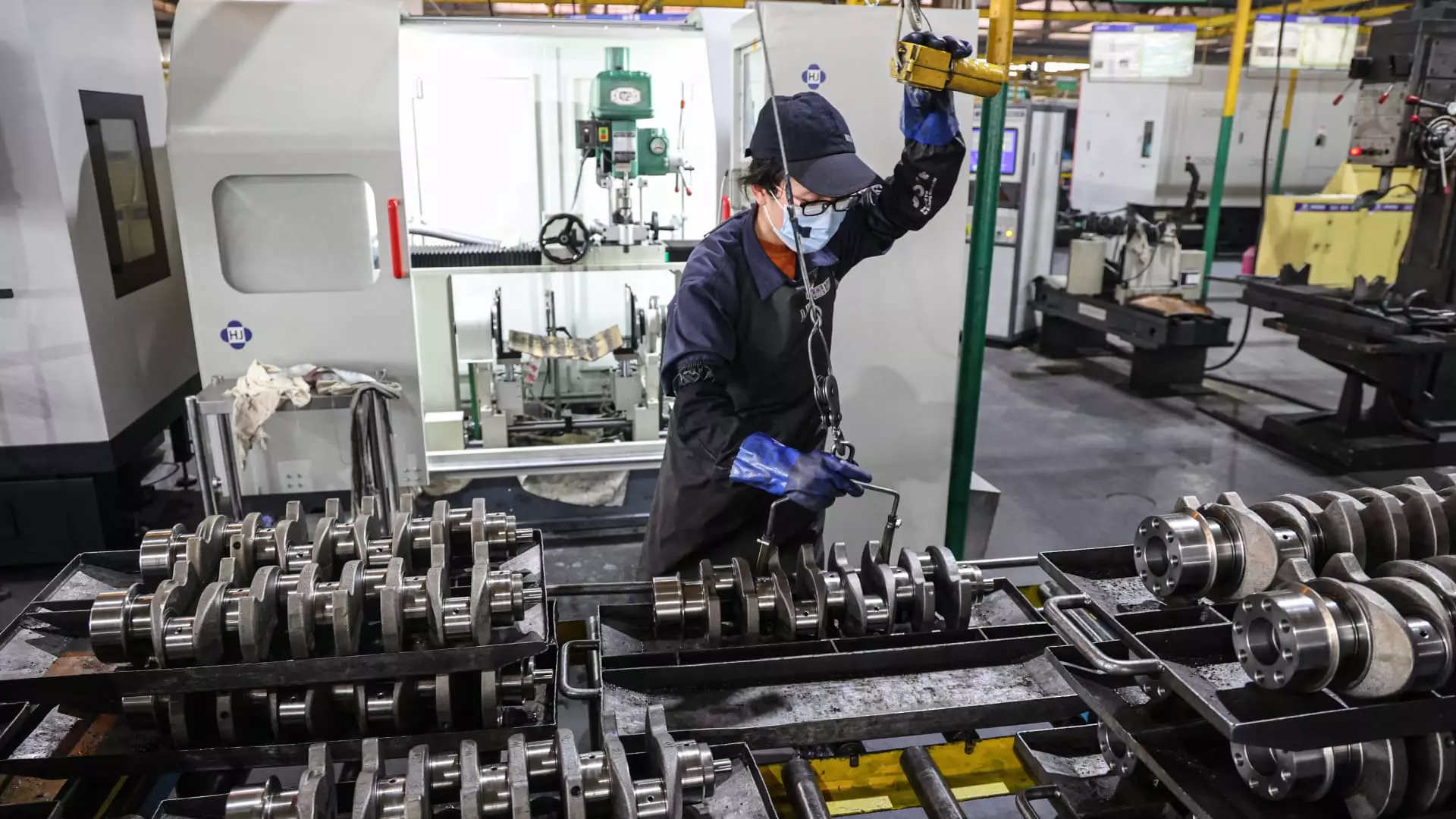While the world is consumed by political discourse on trade wars and tariffs, it appears that China’s industrial sector has found a way to persist and adapt. In April, the National Bureau of Statistics reported a noteworthy increase in industrial profits, rising 3% from the same month last year. This is a significant uptick from March’s 2.6%, hinting at a trend towards stabilization in a tumultuous economic environment. Though U.S. tariffs remain a daunting specter, the Chinese industrial realm showcases a robust capacity to rebound, especially within high-tech and equipment manufacturing sectors.
Interestingly, this surge in profitability comes amid ongoing tension with the United States, where tariffs imposed by the Trump administration have climbed steeply, reaching an astounding 145% on various imports. One might expect these punitive measures to drastically cripple China’s export capabilities, yet the resilience demonstrated hints at a burgeoning diversification of export markets. The ability to pivot and redefine economic strategies speaks volumes about the underlying strength of the industrial fabric of China.
Tariffs: A Double-Edged Sword
The juxtaposition of American tariffs and China’s retaliatory measures has resulted in what some might conclude as a mutually assured economic isolation. With U.S. tariffs currently reduced to 51.1% and China’s counter-tariffs at 32.6%, one must wonder whether this tug-of-war is producing more harm than good for both nations. While trade representatives on both sides engage in dialogue, the reality is that the industrial sectors in China are steadily navigating around these trade barriers.
China has been able to adapt through innovation and is now seeing particular gains in sectors such as biopharmaceuticals and aircraft manufacturing. This adaptability is especially evident in private and foreign-invested businesses, which reported profit increases of 4.3% and 2.5%, respectively. In stark contrast, state-owned enterprises saw a decline of 4.4%, raising eyebrows about the efficiency and resilience of state-led versus market-driven entities.
Constraints and Challenges on the Horizon
Despite this numeric optimism, we must remain wary of the constraints looming over the industrial landscape. For one, Weining Yu from the NBS pointed to “insufficient demand and declining prices” as enduring challenges. While industrial profits have returned to growth, there seems to be an underlying fragility as retail sales growth slowed to 5.1%—a clear indication of an economic dissonance between industrial output and consumer demand.
Moreover, in areas like mining, profits plummeted by 26.8% year-on-year in April. This is a severe decline that prompts critical examination of resource-based industries’ vulnerability—highlighting how not all sectors share in the same prosperity during these challenging times. The skewed profit margins raise questions about the long-term sustainability of the industrial growth witnessed recently.
Consumer Influence and Market Dynamics
Another fascinating factor at play is the role of consumer incentives, particularly in the household appliances domain, where subsidies aimed at modernizing old electronics have led to a remarkable 15% profit boost. This strategy showcases a forward-thinking approach that not only stimulates demand but also encourages sustainable consumer behavior through innovative recycling schemes. However, can this model be replicated across other sectors?
As the industrial profits climb amidst global uncertainty, the connection between government policy, market dynamics, and consumer behavior becomes ever clearer. The interplay of these factors could be the key to maintaining momentum as China faces external pressures from the U.S. and the broader international marketplace.
In closing, while the current industrial profit growth provides a glimmer of promise, the looming challenges necessitate vigilance. In a complex and interconnected global economy, China’s industrial strategy appears to be one of resilience, albeit with critical caveats that warrant attention. Only time will tell whether this growth is sustainable or merely a transient blip in a larger, more tumultuous narrative.


Leave a Reply